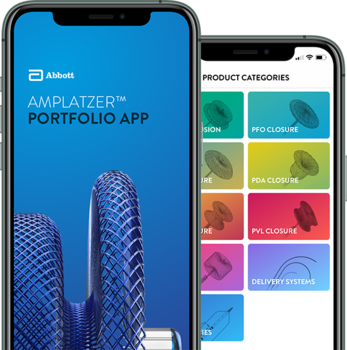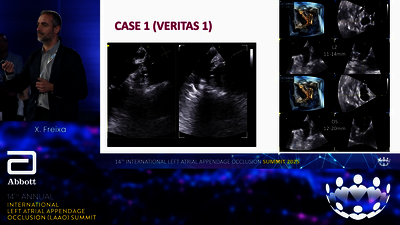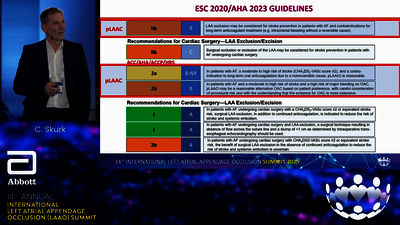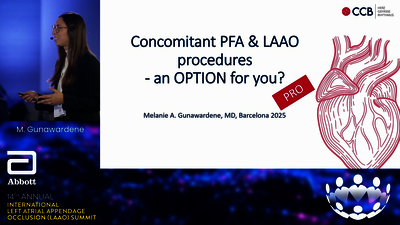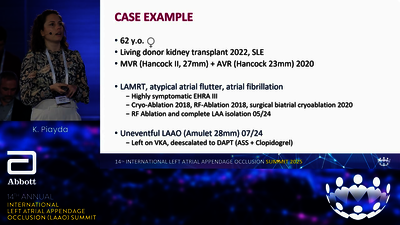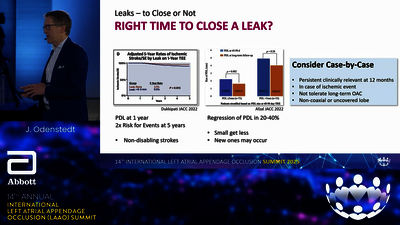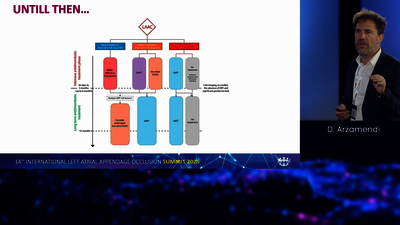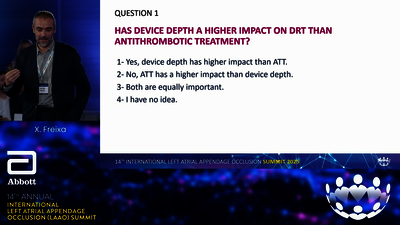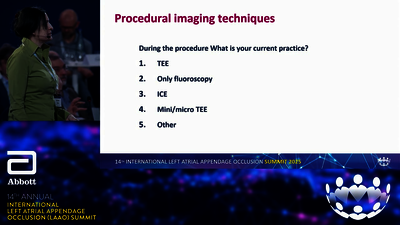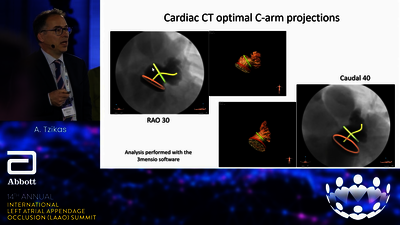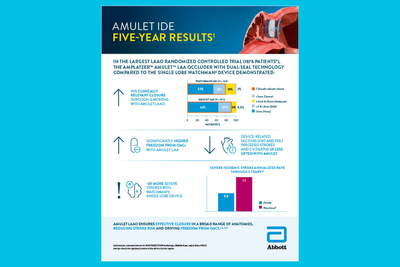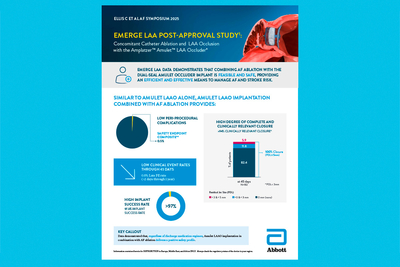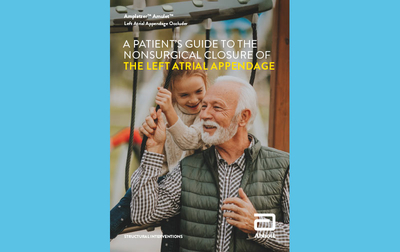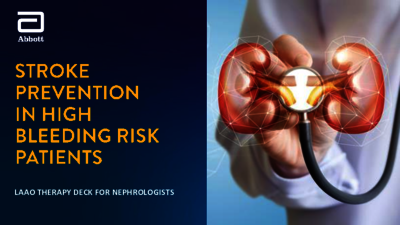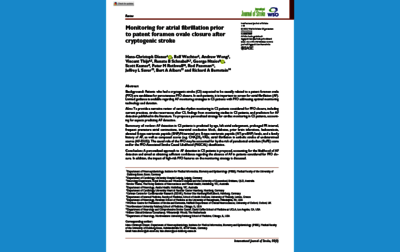Vorhofflimmern (AF) ist mit einem fünffach erhöhten Risiko für einen ischämischen Schlaganfall verbunden.1 Der Verschluss des linken Vorhofohrs (Left Atrial Appendage, LAA) reduziert das Schlaganfallrisiko bei Patienten mit nicht-valvulärem Vorhofflimmern (NVAF), die eine Alternative zu oralen Antikoagulantien suchen.2,3
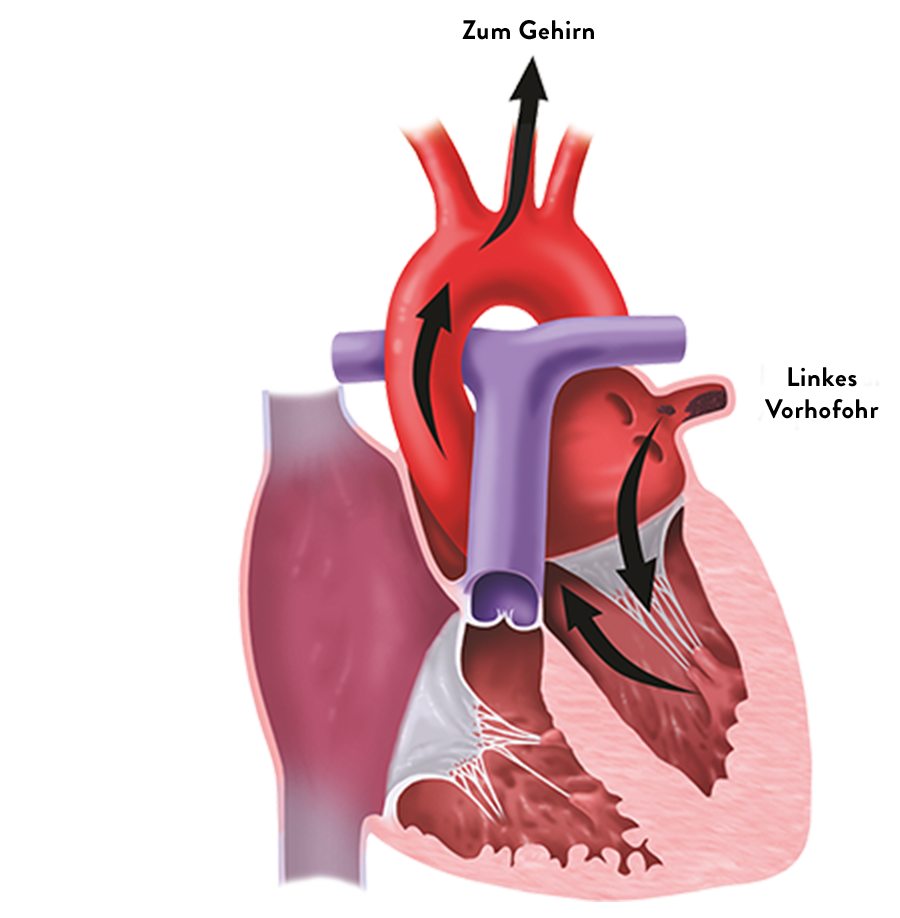
VORHOFFLIMMERN UND DIE LINKE VORHOFSANHANGSGEBILDE
Da sich die oberen Herzkammern (Vorhöfe) bei Patienten mit Vorhofflimmern (AF) nicht richtig zusammenziehen können, können sich Gerinnsel bilden. Eine häufige Stelle für die Bildung von Gerinnseln ist die linke Vorhofsanhangsgebilde (LAA), die mit dem linken Vorhof verbunden ist. Mehr als 90 % der Schlaganfälle bei Menschen mit nichtvalvulärem Vorhofflimmern (NVAF) werden durch Blutgerinnsel verursacht, die sich in der LAA bilden.4,5
ERFAHREN SIE MEHR ÜBER:
- Fuster V, Rydén LE, Cannom DS, et al. ACC/AHA/ESC Practice Guidelines for the Management of Patients with Atrial Fibrillation. Circulation. 2006;114(7):700-752. doi.org/10.1161/CIRCULATIONAHA.106.177292.
- Amplatzer™ Amulet™ LAA Occluder Gebrauchsanweisung.
- Lakkireddy D, Thaler D, Ellis CR, et al. Amplatzer Amulet Left Atrial Appendage Occluder versus Watchman device for stroke prophylaxis (Amulet IDE): Eine randomisierte kontrollierte Studie. Circulation. 2021;144(19):1543–1552. doi.org/10.1161/CIRCULATIONAHA.121.057063.
- Yaghi S, Song C, Gray WA, et al. Left atrial appendage function and stroke risk. Stroke. 2015;46(12):3554–3559. doi.org/10.1161/STROKEAHA.115.011273.
- Blackshear JL, Odell JA. Appendix obliteration to reduce stroke in cardiac surgical patients with atrial fibrillation. Ann Thorac Surg. 1996;61(2):755-759. doi.org/10.1016/0003-4975(95)00887-X.
- Heart Rhythm Society. (2019). Complications from Atrial Fibrillation. Accessed August 21, 2021.
- Suradi HS, Hijazi ZM. Left atrial appendage closure: outcomes and challenges. Neth Heart J. 2017;25(2):143-151. doi.org/10.1007/s12471-016-0929-0.
- Baman JR, Mansour M, Heist EK, et al. Percutaneous left atrial appendage occlusion in the prevention of stroke in atrial fibrillation: a systematic review. Heart Fail Rev. 2018;23(2):191-208. doi.org/10.1007/s10741-018-9681-4.
- Kakkar AK, Mueller I, Bassand JP, et al. Risk profiles and antithrombotic treatment of patients newly diagnosed with atrial fibrillation at risk of stroke: perspectives from the international, observational, prospective GARFIELD registry. PLOS ONE. 2013;8(5):e63479. doi.org/10.1371/journal.pone.0063479.
